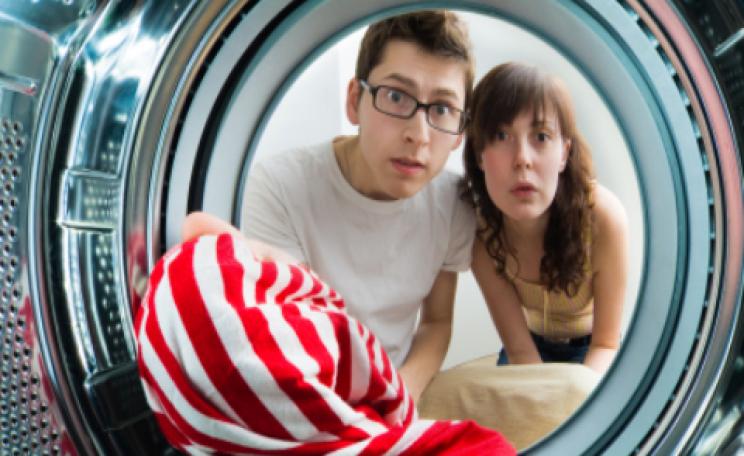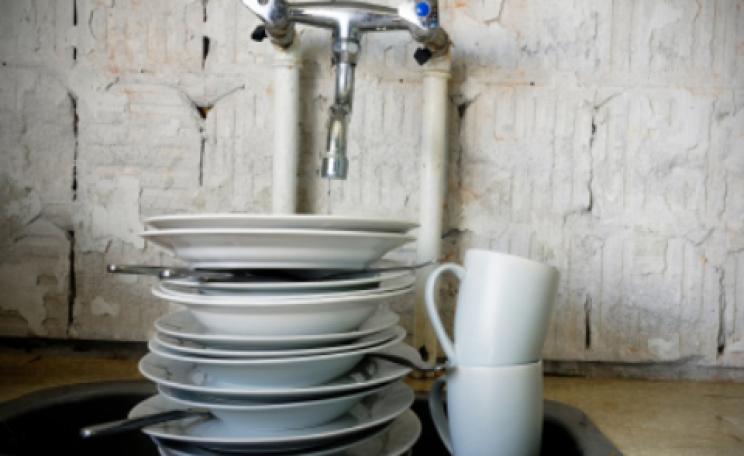The idea that using conventional detergent (instead of an ‘eco’ brand) can be ‘good’ for the planet has been floating around since Ariel’s ‘Turn to 30C’ campaign launched in 2006. ‘Do a good turn’ it said, ‘Turn to 30C with Ariel and reduce the energy per wash by up to 40 per cent.’ A number of other brands have since added their own energy saving messages to their packaging.
The latest big campaign on the block is Unilever’s ‘Cleaner Planet Plan.’ Unilever is the manufacturer of big brand laundry products such as Persil, Surf and Comfort. Launched last week the plan is a global sustainability programme designed to drive both Unilever and its consumers to reduce the impact of laundry products on the environment. It’ll start in the UK and then be rolled out across four continents.
It’s great that a manufacturing giant like Unilever, with its €5 billion laundry business, is launching a plan on such a scale. What’s more the company itself has been making some efforts in the energy, water and waste department for some time. Since 1995, Unilever says it has reduced the energy-related greenhouse gas emissions from its laundry product factories by 44 per cent, waste for disposal by 70 per cent and water consumption by 76 per cent, per tonne of production.
But what does the Cleaner Planet Plan actually entail for consumers? A key part is in encouraging the use of compact, concentrated products that provide ‘outstanding results in the most eco-efficient washing conditions – such as quick and cold washes or less rinsing.’ Unilever claims that if all its customers currently using conventional detergent powder switched to compact powder and those using liquid detergent switched to Small & Mighty concentrate, every wash would use up to 41g and 16g less CO2, respectively. Which would save 4.3 million tons of CO2 a year – equivalent to taking a million cars off the road each year.
Whilst these figures are impressive there is another environmental issue that needs addressing – the ingredients themselves.
Turning the temperature dial down, in itself, is not enough. Focusing on temperature and rinse-ease obscures the fact that conventional powders, tablets, liquids are all laden with chemicals that place a considerable burden on our water system.
When all that foamy water mixed with detergent goes down the drain thousands of litres of water is required to treat it before it is safe to re-enter our water system. Last year I met Ecover’s Mick Bremans who said that one way a product’s impact can be understood is in terms of ‘critical dilution volumes’, (CDVs) which measure how much water it takes to neutralise each dose of a product.
Ecover makes its products from plant and mineral based ingredients that biodegrade quickly and completely as opposed to petrochemical ingredients that can take longer and might not do so completely.
‘If 5 per cent of UK families switched from a conventional product to Ecover, more than half a million swimming pools’ worth of water would be safeguarded against pollution in a year,’ Bremans told me.
Well, he would say that, wouldn’t he? But the company does have a sensible strategy towards water pollution. Ecover doesn’t claim to produce an ‘environmentally friendly’ detergent, but does try to keep the burden as low as possible by guaranteeing rapid and complete biological degradability.
Are reducing ‘critical dilution volumes’ part of Unilever’s Cleaner Planet Plan? Keith Rutherford, Global Sustainability Programme Director says that their ingredients are subject to a ‘scientific-based environmental risk assessments conducted by their independent Safety and Environmental Assurance Centre’ which it claims is a ‘more comprehensive and rigorous way to assure safety than the CDV approach.’ That doesn’t sound like a target, as such, to me.
Asked whether Unilever intends to make any plant or mineral based formulations Rutherford maintains that the Cleaner Planet Plan is ‘built upon the science of in-depth Life Cycle Analysis’ which takes into account raw materials sourcing as well as manufacture, consumer use and disposal. It is used so as to guide the company in making what it calls the ‘the right choices and not just the intuitive choices’ about what has the ability to reduce the environmental imprint of doing laundry. ‘A product that is fully based on natural ingredients is not necessarily best for the environment or the consumer,’ concludes Rutherford.
Can this really be so? Stats and statements like this can be confusing for the eco-conscious who have faithfully been using ‘eco’ detergents for years. What used to be a clear cut matter of going for formulations made of plant or mineral based ingredients has become a little more murky.
In two minds, I rang Henry King, science and technology leader for sustainability, who works at Unilever’s Safety Environmental Assurance Centre. Are petrochemicals really better than natural materials, I asked him.
‘It’s difficult to say one is better than the other,’ he told me. ‘Each source/route has its own set of impacts that need to be managed. For example, with plant based materials there could be fertiliser and pesticide usage that you don’t have with petrochemicals. But then you don’t get oil spills or flaring of gases with crop production. Then you’ve got possible land use issues and the competition for crops between food and non-food uses (e.g. biofuels).’
Do all Unilever’s ingredients break down completely?
'No, some may be poorly biodegradable (e.g certain long-chain polymers) but their levels of usage tend to be low.'
Are some of these toxic?
‘Toxicity is a property of all materials which is why we use a risk assessment based approach to assure safety and set acceptable use levels for materials so that we protect the environment. Typically, materials that degrade rapidly - you can use more of.’
He stressed that Unilever is investing in biotechnology and new polymer and biopolymer science – ‘part of this could mean developing more degradable ingredients and formulations.’
I then went to David Santillo Senior Scientist, Greenpeace Research Laboratories, to ask what he thought of the Cleaner Planet Plan.
‘In general aiming for lower temperatures and shorter wash cycles is a good thing. But the trouble is they’re still stuck using the same old brands of chemicals. Looking for the least hazardous chemicals rather than reformulating and repackaging what they’ve got would be the more responsible approach’ he says.
Whilst there may be no such thing as a 'green' wash - even plant and mineral-based detergents require water to neutralise their impact on the water supply as well as energy for the manufacturing process and transport for their raw ingredients - natural products usually break down in the water more easily and quickly. You can wash at low temperatures with them and still get white(ish) whites. They don’t contain ingredients like phosphates, the problems of which have been well documented. In fact, following last year’s Defra consultation a spokesperson told me that the Government would be ‘moving forward to ban phosphates in laundry detergent, and consulting on how best this can be implemented in the coming months’.
Nor should they contain optical brighteners (chemicals that make clothes appear cleaner than they are) which David Santillo says are ‘environmentally persistent’ – that is, they don’t biodegrade. The presence of optical brighteners in treated sewage effluent is now such a common occurrence that measuring the fluorescence of water is being used as a cheap way of detecting sewage contamination of waters, both freshwater and seawater. Some see this as an 'additional benefit' from their use in the laundry detergents. Santillo finds it hard to come to this conclusion. ‘Chemicals that hang around on your clothes while you wear them to make them look cleaner than they are and which survive long enough to be washed out of the clothes, pass through a sewage treatment works and be easily detectable in our rivers and seas come across as neither a necessary nor wise application of modern chemistry.’ He says there is, as yet, little knowledge of their final fate and effects in the aquatic environment.
There’s no doubt that any plan that aims to reduce energy and water use is an inspired idea. But what happens when the soapy remains go down the plughole and into the water supply and natural world is of equal importance.
Let’s hope that Unilever succeed in making improvements in that department too.
Laura Sevier is the Ecologist’s Green Living Editor.
See also







